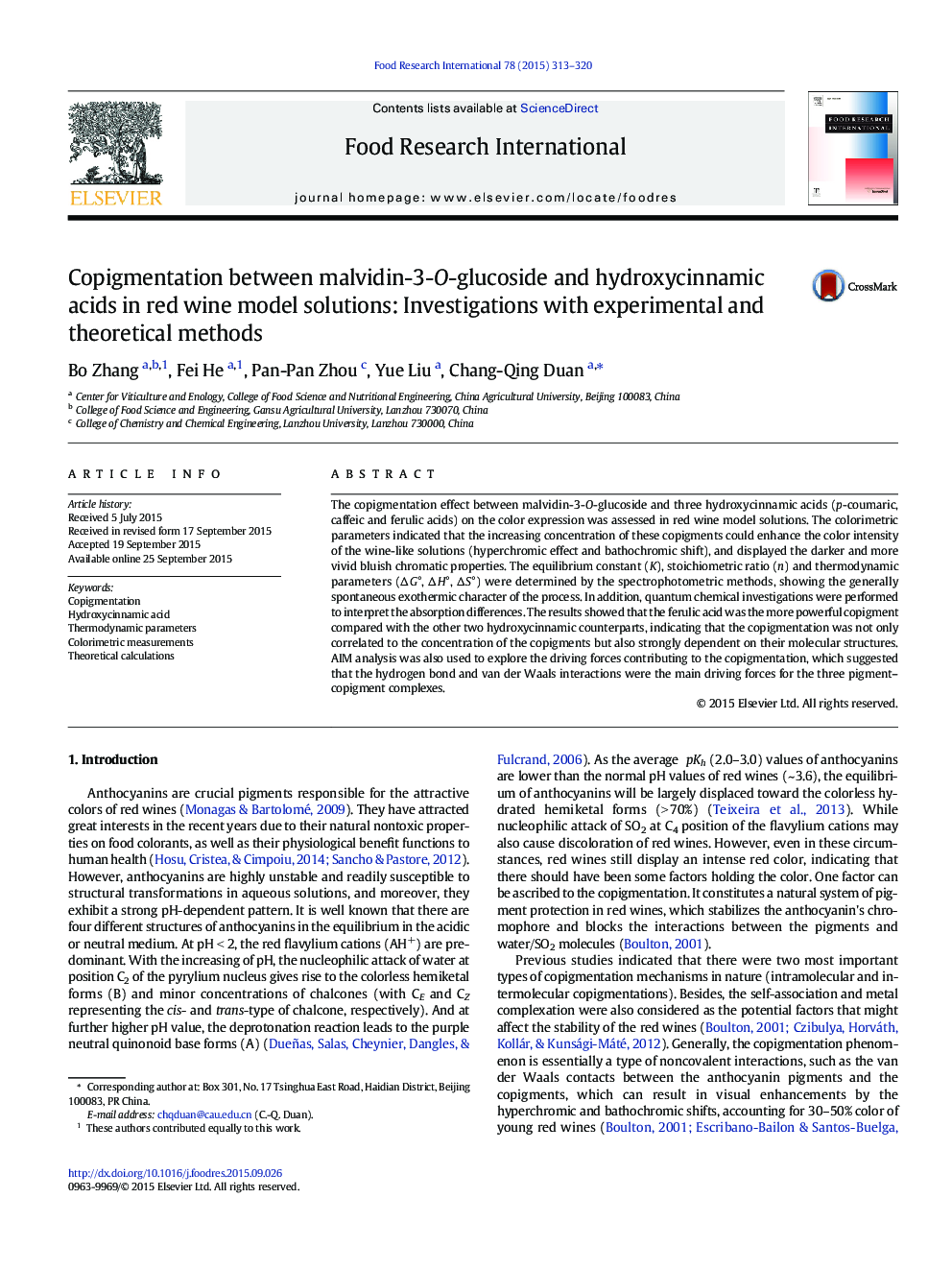| کد مقاله | کد نشریه | سال انتشار | مقاله انگلیسی | نسخه تمام متن |
|---|---|---|---|---|
| 4561323 | 1628470 | 2015 | 8 صفحه PDF | دانلود رایگان |

• Hydroxycinnamic acids show strong intermolecular copigmentation with M3OG.
• The effect of the three copigments ranked as FA > CA > pCA, respectively.
• The concentration and structure of the copigments affected the copigmentation.
• The thermodynamic parameters, ∆∆ Gbinding and ∆ E explained the absorption differences.
• H-bonds and van der Waals interactions were the main copigmentation driving forces.
The copigmentation effect between malvidin-3-O-glucoside and three hydroxycinnamic acids (p-coumaric, caffeic and ferulic acids) on the color expression was assessed in red wine model solutions. The colorimetric parameters indicated that the increasing concentration of these copigments could enhance the color intensity of the wine-like solutions (hyperchromic effect and bathochromic shift), and displayed the darker and more vivid bluish chromatic properties. The equilibrium constant (K), stoichiometric ratio (n) and thermodynamic parameters (∆ G°, ∆ H°, ∆ S°) were determined by the spectrophotometric methods, showing the generally spontaneous exothermic character of the process. In addition, quantum chemical investigations were performed to interpret the absorption differences. The results showed that the ferulic acid was the more powerful copigment compared with the other two hydroxycinnamic counterparts, indicating that the copigmentation was not only correlated to the concentration of the copigments but also strongly dependent on their molecular structures. AIM analysis was also used to explore the driving forces contributing to the copigmentation, which suggested that the hydrogen bond and van der Waals interactions were the main driving forces for the three pigment–copigment complexes.
Journal: Food Research International - Volume 78, December 2015, Pages 313–320